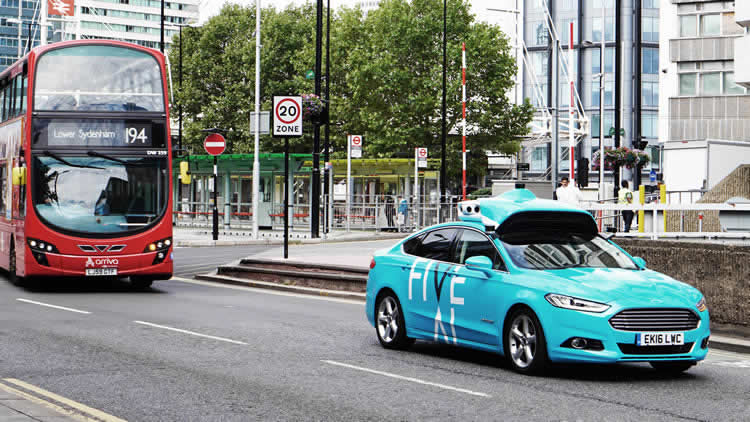Technical Writer at 5G.co.uk
Sarah Wray is a technical writer with over 10 years' experience writing about technology, including telecoms, smart cities, data, IoT, aerospace, and more.

UK company FiveAI has been given the go-ahead to deploy data-gathering cars on London’s streets to pave the way for a potential driverless car service.
FiveAI plans to spend the next 10 months deploying five cars (with drivers on board) in Bromley and Croydon to collect data on roads, including layout, topology and traffic flow, as well as road user behaviour. The data collected will be processed in line with General Data Protection Regulations (GDPR) and used to feed into the development of FiveAI’s planned services.
FiveAI notes that all its data collection vehicles will be clearly branded and feature an “obvious array” of sensors to ensure transparency.
The shared service the company is working on will target commuters who drive at least part of their journey. FiveAI hopes to run a supervised trial of autonomous vehicles in London in 2019.
FiveAI co-founder Ben Peters says that autonomous vehicles will be much safer than human-driven cars and the data-gathering exercise is a crucial stage towards getting them onto the roads.
He commented: “By supporting London’s transport objectives with a shared driverless car service, FiveAI can play a crucial role in reducing congestion, emissions, incidents and the cost and time of journeys to benefit all Londoners.”
Some say that autonomous cars will only be a reality when we have 5G. Elsewhere, alongside data-gathering initiatives such as FiveAI’s, trials are ongoing to ensure that 5G connectivity will be in place to support driverless cars in the future.
For example, at Millbrook Proving Ground in Bedford, as part of the AutoAir project, led by Airspan Networks, advanced 5G test networks are being deployed to validate connected and autonomous vehicle (CAV) technologies. The researchers are focused on areas such as complicated cell-tower hand-offs and issues related to bandwidth. They are also looking at how the work they are doing on 5G connectivity could be transferred to road and rail systems.
Meanwhile, government mapping agency, Ordnance Survey (OS), is leading an initiative to help better understand the infrastructure needed to support a nationwide network of CAVs. The E-CAVE project will run for four years and will focus on the geospatial aspects of how CAVs exchange safety-related messages between themselves and the supporting environment.
OS is also working with the 5G Innovation Centre and the Met Office on a digital twinning tool to help determine the best places to put radio antennae to underpin a 5G network
Lyca Mobile’s cheap Pay As You Go deals include roaming and international minutes.





